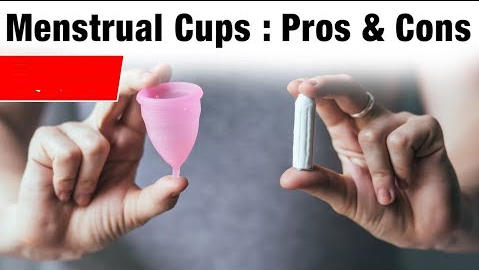Table of Contents
Context
- Menstrual cups are safe, reusable and cheap, says The Lancet Public Health journal • Sanitary protection remains unavailable and unaffordable to many women around the world stated The Lancet Public Health, a peer-reviewed medical journal. It is the first study to evaluate menstrual cups.
Information
- 70% of women who have tried menstrual cups said they would like to continue using them.
- The new research — a review of 43 earlier studies gathering data on 3,300 women — is the first to evaluate menstrual cups.
- Even in rich countries, only a fifth of women on average knew about the new devices, three of the studies found.
- Nearly 200 brands are available in 99 countries, but cups were only mentioned in a third of websites with educational information and advice on puberty in 27 countries.
What is Menstrual cup
- A menstrual cup is a feminine hygiene device that is inserted into the vagina during menstruation.
- Its purpose is to collect menstrual fluid (blood from uterine lining) and prevent its leaking onto clothes. • Menstrual cups are usually made of flexible medical grade silicone and shaped like a bell with a stem. The stem is used for insertion and removal.
- The bell-shaped cup seals against the vaginal wall just below the cervix.
- Made from medical grade silicone, rubber or latex, the cups collect blood rather than absorb it, as pads and tampons do. They last from four to 12 hours.
- There are two types: a so-called vaginal cup which is generally bell-shaped, and a cervical cup, which is placed around the cervix high in the vagina much like a diaphragm for contraception.
- In four of the studies reviewed, the cups were found to be as effective or better at collecting blood than sanitary pads or tampons.
Cons
- The research showed no increased risk of infection. There were, however, five reported cases of toxic shock syndrome (TSS), a potentially lifethreatening condition caused by bacteria getting into the body via foreign objects.
Pros
- Duration of usage
- The cup is reusable and can last for up to ten years, making it cheaper in the long run that disposable alternatives.
Environmental impact
- Since they are reusable, menstrual cups help to reduce solid waste. Some disposable sanitary napkins and plastic tampon applicators can take 25 years to break down in the ocean and can cause a significant environmental impact. Biodegradable sanitary options are also available, and these decompose in a short period of time, but they must be composted, and not disposed of in a landfill.
Latest Burning Issues | Free PDF






















 WhatsApp
WhatsApp